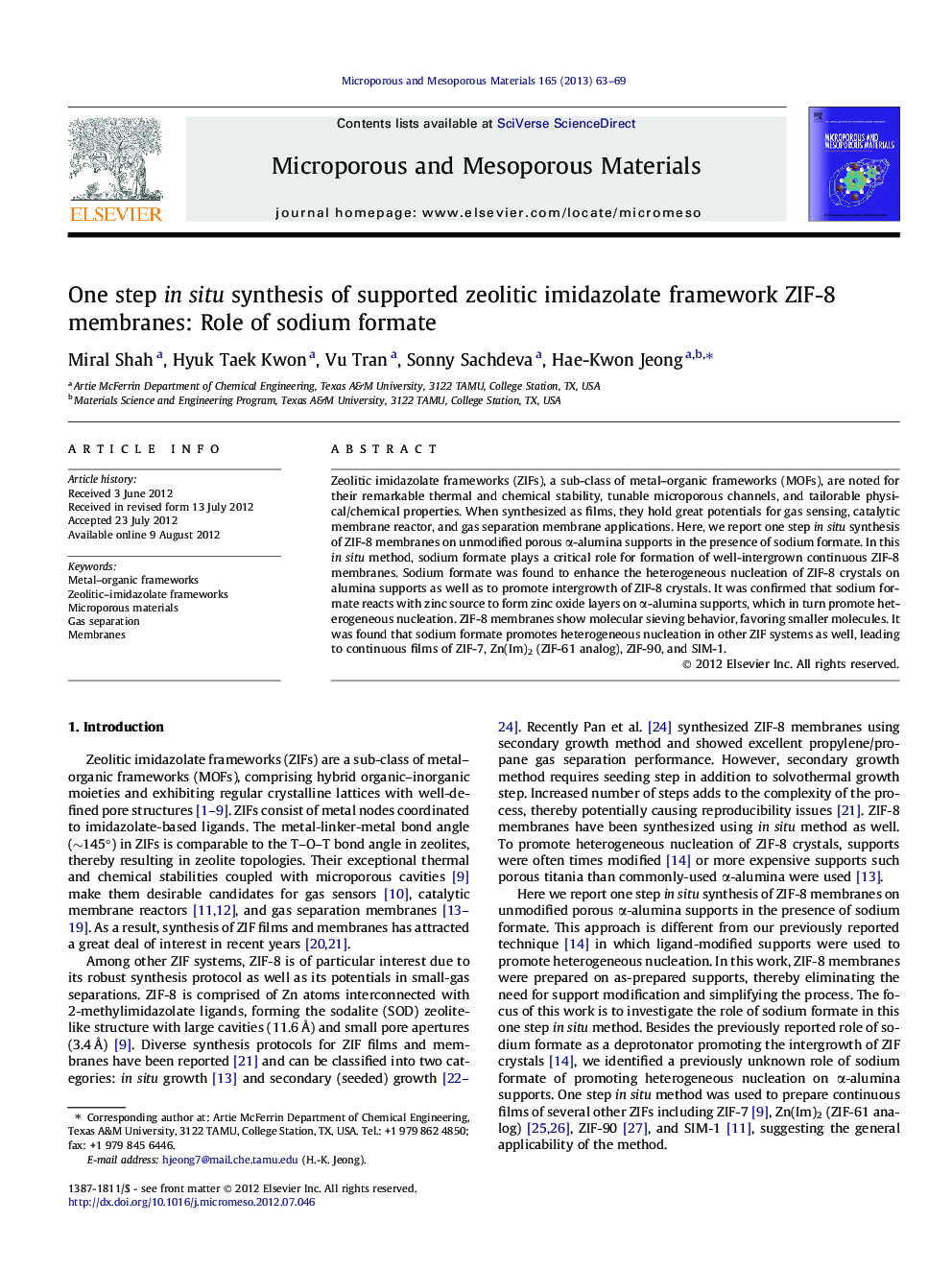| Article ID | Journal | Published Year | Pages | File Type |
|---|---|---|---|---|
| 73912 | Microporous and Mesoporous Materials | 2013 | 7 Pages |
Zeolitic imidazolate frameworks (ZIFs), a sub-class of metal–organic frameworks (MOFs), are noted for their remarkable thermal and chemical stability, tunable microporous channels, and tailorable physical/chemical properties. When synthesized as films, they hold great potentials for gas sensing, catalytic membrane reactor, and gas separation membrane applications. Here, we report one step in situ synthesis of ZIF-8 membranes on unmodified porous α-alumina supports in the presence of sodium formate. In this in situ method, sodium formate plays a critical role for formation of well-intergrown continuous ZIF-8 membranes. Sodium formate was found to enhance the heterogeneous nucleation of ZIF-8 crystals on alumina supports as well as to promote intergrowth of ZIF-8 crystals. It was confirmed that sodium formate reacts with zinc source to form zinc oxide layers on α-alumina supports, which in turn promote heterogeneous nucleation. ZIF-8 membranes show molecular sieving behavior, favoring smaller molecules. It was found that sodium formate promotes heterogeneous nucleation in other ZIF systems as well, leading to continuous films of ZIF-7, Zn(Im)2 (ZIF-61 analog), ZIF-90, and SIM-1.
Graphical abstractFigure optionsDownload full-size imageDownload as PowerPoint slideHighlights► ZIF-8 membranes were synthesized by one step in situ method using sodium formate. ► During in situ growth sodium formate reacts with zinc source to form zinc oxide layer on the support. ► Zinc oxide layer promotes heterogeneous nucleation and acts a secondary metal source. ► Sodium formate promotes heterogeneous nucleation for other ZIF systems yielding ZIF-7, ZIF-90, Zn(Im)2 (ZIF-61 analogue), SIM-1 films.
